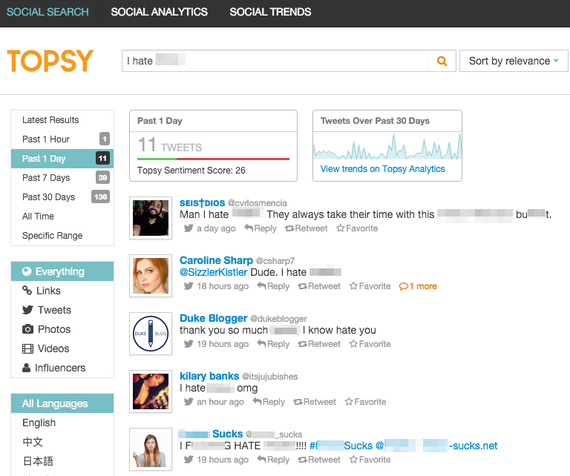In most cases, stealing is wrong. Please don't do it.
However, there are cases in which stealing is not only right, but recommended. A little pilfering in the marketing arena is a smart way to grow your business.
The techniques that I share below are far from nefarious. In fact, you'll probably discover that many of them are mutually beneficial.
In the purloining world of marketing, what kind of things are you allowed to snatch?
1. Keyword ideas
What keywords should you be targeting in your SEO? One way to find out is to discover what keywords your competitor is targeting.
This is easy to find out. Visit their website, and identify their keyword focus on the homepage. Dig a little deeper, and explore internal pages to learn about their content focus. A recurring longtail keyword phrase is a telltale sign of a good keyword to target.
2. Reputation
Piggybacking on a competitor's reputation is a great way to build relationships and forge long-term partnerships.
Your competitor doesn't need to be an enemy, locked in a perpetual standoff. Instead, you can join forces to host a webinar, Twitter discussion, Q&A blog, or other joint venture.
The combined forces of your competitor's reputation and your own marketing savvy can turn into an explosive combination that benefits both of you. One of my fans recently stole my reputation, and I couldn't be happier with the result.
3. Content
Your competitor might be producing stellar content. Don't let this opportunity go to waste. Promote your competitor's content on social media.
Doing so gives you fodder for your social media curation, and it positions you as a valuable, sharing resource in your niche.
4. Branding ideas
Industries are often characterized by a certain style of branding. If you're in the early stages of launching your company, find out what your competitors are doing to brand themselves.
You can draw inspiration from their colors, styles, fonts, techniques, and website layouts. All of these features are common in the industry and will help your new business identify as a player.
5. Fans
This is a good one. Find out who's following your competitor's social profiles, and follow them.
Following followers is a great method of learning about your target market. If your customer base is small, you can investigate the followers of your competition to find out what kind of customers could potentially be purchasing from you -- their occupation, language, interests, and other features.
Since follower identities are public knowledge on most social media sites, get busy on LinkedIn, Twitter, Facebook, Instagram, and Google+ to gather some new fans.
6. Calls to action
Have you spotted an irresistible CTA on your competitor's website? Use it. Great CTAs are a powerful force, and you can't go wrong by split testing a variety of them.
7. Pricing techniques
Pricing can be dicey. What are customers willing to pay? How are they expected to pay? Which payment models work best? What kind of pricing plan is the most effective?
Your competitor might have the answer. Pose as a customer to find out prices, or simply import their publicly available pricing page to gain some insights into how the pricing game works in your niche.
8. Disaffected ex-customers
If your competitor loses customers along the way, who's going to pick up the pieces?
Why not you? Finding these customers takes just minutes. Go to Topsy.com, and search for "I hate [competitor name]." Voila! An instant list of customers, ripe for the picking.
The following is a real example of such a search:
9. Content publication frequency
One vexing question in the content marketing industry is, "How often should I post content?" Take a page from your competitor's playbook, and follow their velocity.
10. Email updates
Want to get the real inside scoop on your competitor? Simply subscribe to their newsletter. Instantly, you receive details on content, prices, promotions, events, and other goings-on.
11. High traffic pages
What's the hottest content on your competitor's website? Chances are, if you can replicate the style, subject, and approach of this content, you'll achieve similar results.
Use a free Buzzsumo search to identify the top-shared pages on your competitor's site, and learn from their expertise.
Buzzsumo displays the top five shared pages.
12. Guest blogging sites
Guest blogging is one of the smartest marketing techniques in the book. The hard thing about guest posting is finding the right sites.
Luckily, your competitor might have solved this problem for you. The sites on which your competitor posts content could be the best place for you to post content.
Do a Google search for "articles by [competitor name]." Filter out their own site using the minus sign, and see what comes up.
For example, if you were to search for "articles by neil patel -www.quicksprout.com -www.neilpatel.com," you'd find some of my preferred guest posting sites.
13. Good ideas
Sometimes, the best thing to nab is a good idea.
Unless patented, protected, or kept secret, ideas are in the public domain. If you legally hear about it or are simply inspired by something your competitor has done, an idea is yours to execute with impunity.
Conclusion
There is such a thing as marketing ethics. Never overstep the bounds of propriety as you seek to improve your company's marketing. But by all means, learn all you can, do all you can, and work as hard as you can.
Before long, you'll be so good that your competitor will start stealing from you. That's a good position to be in.
What things have you "borrowed" from your competition?


